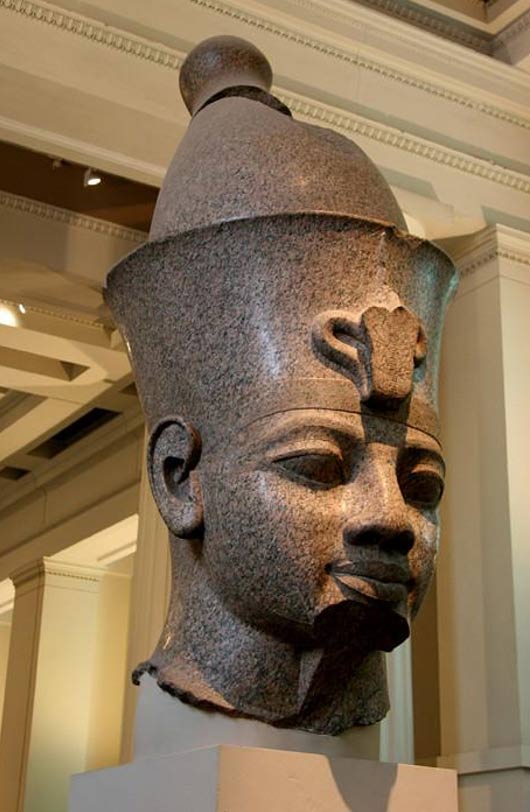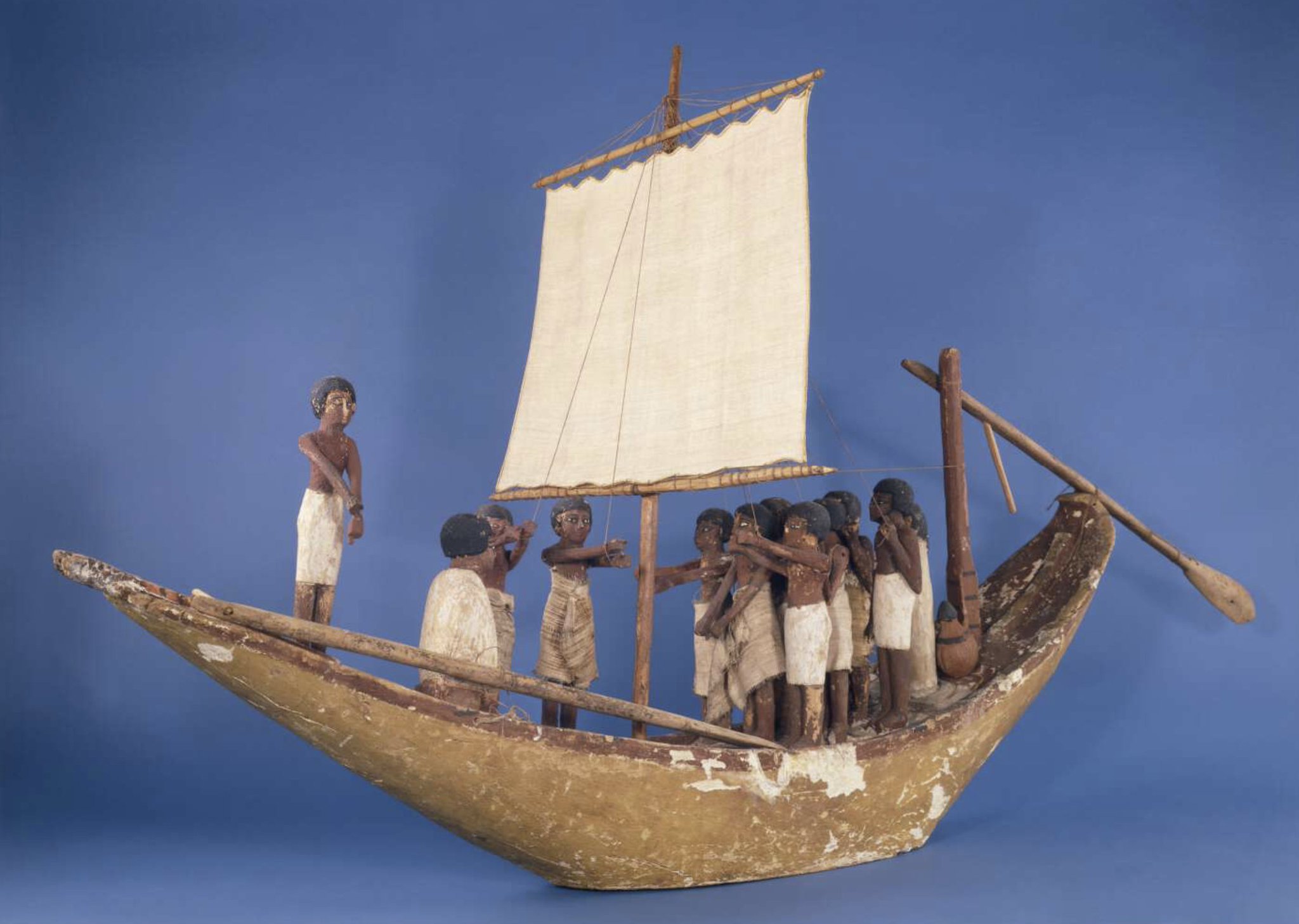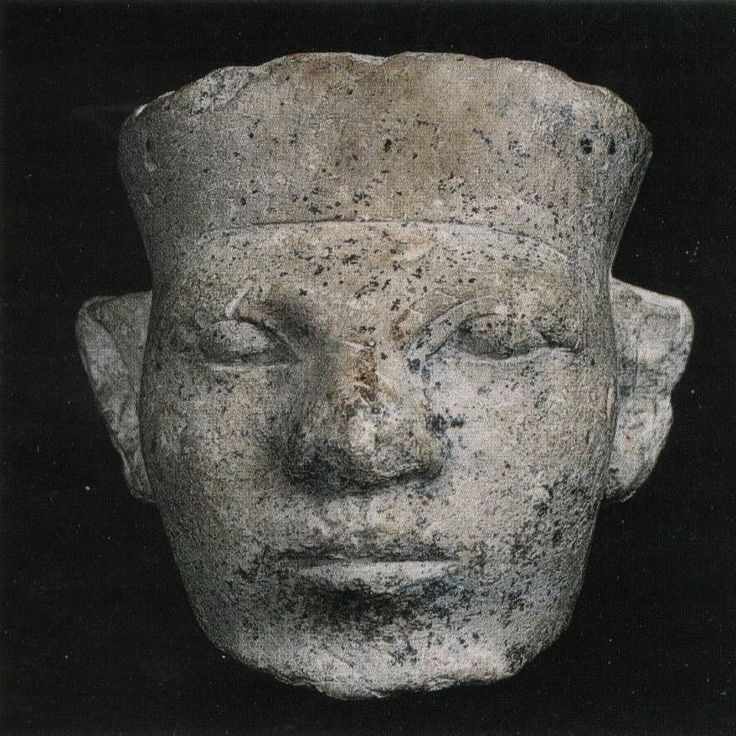From
Aswan, the southern limit of Egyptian control at the time, Egyptians imported gold, incense, ebony, copper, ivory, and exotic animals from tropical Africa through Nubia.
Relations between the Egyptians and Nubians showed peaceful cultural interchange, cooperation, and mixed marriages. Nubian bowmen that settled at Gebelein during the First Intermediate Period married Egyptian women, were buried in Egyptian style, and eventually could not be distinguished from Egyptians.
Older scholarship noted that some Egyptian pharaohs may have had Nubian ancestry.
[56][57] Richard Loban expressed the view that
Mentuhotep II of the 11th Dynasty "was quite possibly of Nubian origin" and cited historical evidence which mentioned that
Amenemhet I, founder of the 12th Dynasty, "had a Ta Seti or Nubian mother".
[58][59][60] Deitrich Wildung has argued that Nubian features were common in Egyptian iconography since the pre-dynastic era and that several pharaohs such as Khufu and Mentuhotep II were represented with these Nubian features.
Frank Yurco wrote that "Egyptian rulers of Nubian ancestry had become Egyptians culturally; as pharaohs, they exhibited typical Egyptian attitudes and adopted typical Egyptian policies".
Yurco noted that some Middle Kingdom rulers, particularly some pharaohs of the Twelfth Dynasty had strong Nubian features, due to the origin of the dynasty in the Aswan region of southern Egypt. He also identified the pharaoh Sequenre Tao of the
Seventeenth Dynasty, as having Nubian features.
[62] Many scholars in recent years have argued that the mother of Amenemhat I, founder of the
Twelfth Dynasty was of Nubian origin.
Nubians were an integral part of New Kingdom Egyptian society. Some scholars state that Nubians were included in the 18th Dynasty of Egypt's royal family.[83] Ahmose-Nefertari, "arguably the most venerated woman in Egyptian history",[84] was thought by some scholars such as Flinders Petrie to be of Nubian origin because she is most often depicted with black skin.[56][85]: 17
[86] The mummy of
Ahmose-Nefertari's father,
Seqenenre Tao, has been described as presenting "tightly curled, woolly hair", with "a slight build and strongly Nubian features".
[87] Some modern scholars also believe that in some depictions, her skin color is indicative of her role as a goddess of resurrection, since black is both the color of the fertile land of Egypt and that of the underworld.
[88][89]: 90
[90][84][91]: 125 However, there is no known depiction of her painted during her lifetime (she is represented with the same light skin as other represented individuals in tomb TT15, before her deification); the earliest black skin depiction appears in tomb TT161, c. 150 years after her death.: 11–12, 23, 74–5
[92]: 125 Egyptologist Barbara Lesko wrote in 1996 that Ahmose-Nefertari was "sometimes portrayed by later generations as having been black, although her coffin portrait gives her the typical light yellow skin of women."
[93] In 2009, Egyptologist Elena Vassilika, noting that in a wooden statuette of the queen (now at the
Museo Egizio) the face is painted black but the arms and feet are light in color, argued that the reason for the black coloring in that case was religious and not genetic.

 I support black people believing whatever they want stop trying to tell us what to think and feel you’ve done that for long enough . I don’t care that some breh in the barber shop thinks he’s a pharaoh honestly good for him
I support black people believing whatever they want stop trying to tell us what to think and feel you’ve done that for long enough . I don’t care that some breh in the barber shop thinks he’s a pharaoh honestly good for him 











